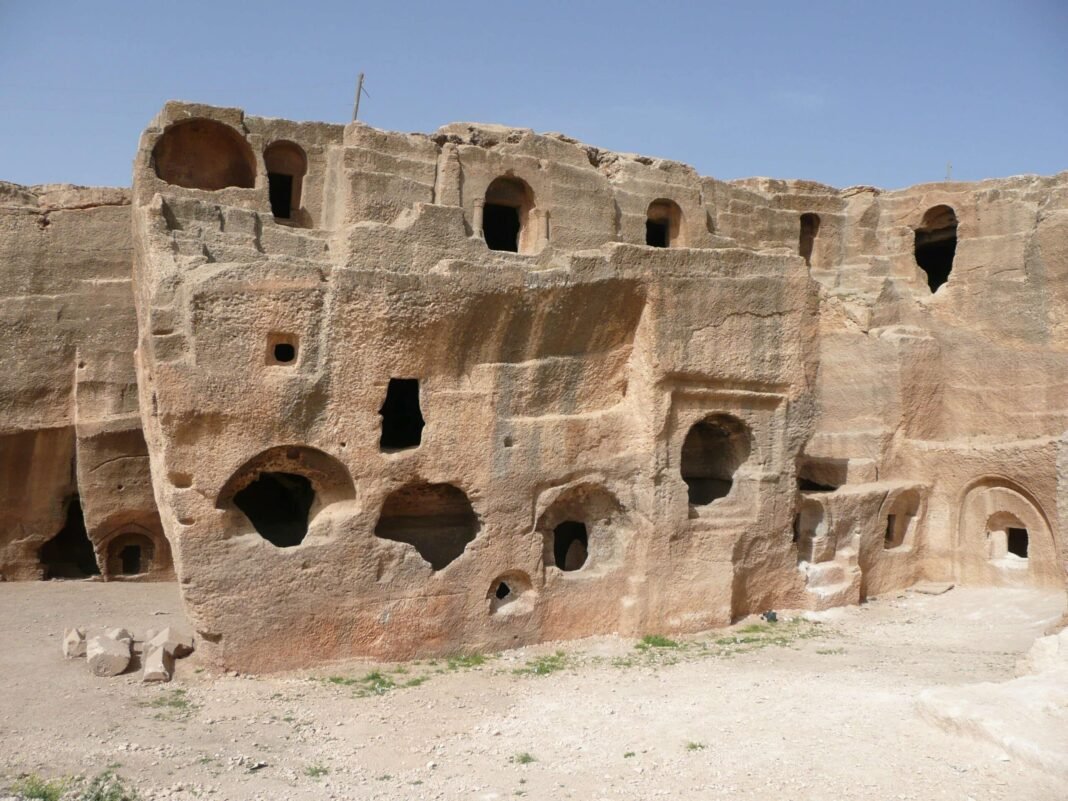
Archaeologists have uncovered a nearly intact 1,500-year-old Byzantine mosaic in the ancient city of Dara (Greek: Δάρας), located in the Artuklu district of southeastern Turkey. The find adds to the growing body of discoveries at the historic Byzantine-era site.
The mosaic, measuring about 50 square meters, was found in a residential building near the city’s ancient marketplace. It features well-preserved geometric designs, including wave and diamond-shaped patterns. The area also features the remains of Roman-era shops, workshops, and a sophisticated water supply system.
Mosaic linked to the reign of Justinian I
Excavation teams have determined that the mosaic dates back to the reign of Emperor Justinian I, between 527 and 565 A.D. The discovery of coins on-site helped establish the timeline. Experts believe the artwork may have been restored in antiquity, which has contributed to its remarkable condition after more than a millennium.
Mardin Artuklu’daki Dara Antik Kenti’nde yaklaşık 1500 yıllık damla ve dalga motifli mozaik keşfedildi. pic.twitter.com/KWfny9jNez
— TRHaber (@trhaber_com) July 7, 2025
The Byzantine Empire, also known as the Eastern Roman Empire, founded Dara as a military stronghold against the Sasanian Empire, the last pre-Islamic Persian/Iranian empire. Located roughly 30 kilometers (18 miles) from Mardin’s city center, it grew into a center of trade, defense, and religious activity across Mesopotamia.
The site contains several important structures, including a church, a palace, a necropolis, an armory, a prison, and an ancient water reservoir.
Mosaic reflects Greek-Byzantine cultural influence
The mosaic was created during the time of the Byzantine Empire when Greek was the dominant language and cultural force across the Eastern Roman world. Art from this period often featured symbolic and geometric motifs, as seen in Dara.
Although the city lies within modern Turkey, its architecture and decorative arts—such as the newly discovered mosaic—were shaped by Greek traditions and Orthodox Christian beliefs common throughout the empire.
Archaeologists highlight the rare completeness of the floor
Devrim Hasan Menteşe, the lead archaeologist on the project, said that Dara is known for its rich mosaic culture, particularly in the agora and surrounding homes.
#BREAKING 1,500‑Year‑Old Mosaic Unearthed at Dara Ancient City, Mardin!
Archaeologists working at the ancient Byzantine frontier town of Dara, founded to protect against the Sasanian Empire, have uncovered a remarkable mosaic floor. Adorned with wave and droplet motifs, the… pic.twitter.com/e4AQaVx8xz
— History Content (@HistContent) July 7, 2025
“We’ve uncovered mosaics before, but this is the first time we’ve found such a large, continuous example in this area,” Menteşe said.
Preservation efforts gain momentum through a national project
Excavations have taken place at Dara for nearly 40 years. Efforts intensified last year after the site was added to the Ministry of Culture and Tourism’s “Heritage for the Future Project,” which aims to accelerate preservation and research at key archaeological locations across Turkey.
Provincial Culture and Tourism Director Ayhan Gök described the mosaic as a major discovery. “It’s an extraordinary find—uncovered after remaining untouched for 1,500 years,” he told Anadolu Agency.
Dara’s importance as a religious and commercial hub
Inscriptions found nearby indicate Dara was also a destination for religious pilgrims, further highlighting its historical importance beyond its military function. At its height, the city reportedly housed up to 25,000 soldiers and served as a gateway for commerce and worship in the region.
Despite seasonal weather challenges, excavation teams continue to uncover parts of Dara’s vast archaeological landscape, including its city walls, burial grounds, cisterns, and public spaces.
The newly found mosaic is expected to boost interest in the site, drawing more visitors and researchers to one of southeastern Turkey’s most significant ancient cities.


